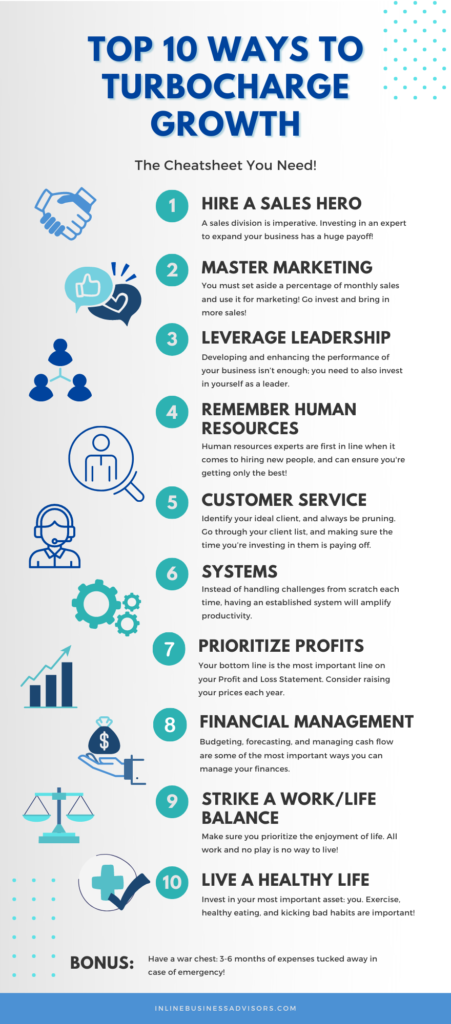When your company starts generating profits it’s an indication that your hard work and dedication are paying off. What should you do with those earnings to ensure long term growth and success? The answer lies in making investments. In this article we will delve into ten strategies to invest your company’s profits to propel it towards growth. Whether you’re a startup or an established corporation, these approaches will help you maximize your earnings and secure a bright future.
1. Investing in Your Team
Indeed, the valuable asset of your company isn’t merely its products or services. Rather, it’s the individuals who make up your team. Consequently, to ensure the growth of your company, it is crucial to invest in the skills, well-being, and development of your employees. By doing so, you’ll see how allocating a portion of your profits towards your team can yield significant returns.
Training and Development
Continuous learning is essential for professional growth. Implementing training programs can enhance the skills of your employees while keeping them updated on industry trends and best practices. This investment not only makes your team more capable; it also demonstrates your commitment to their personal advancement.
Employee Benefits
Certainly, when a workforce is satisfied and content, they are more inclined to remain loyal to your company and consistently deliver their best effort. Consequently, one effective method to enhance employee satisfaction and bolster retention rates is by investing in attractive employee benefit packages.
For instance, comprehensive healthcare coverage can alleviate the stress of medical expenses, leading to healthier and happier employees more focused on their work. This sense of security and well-being translates into increased productivity and dedication to your company’s growth.
Hiring Top Talent
Your company’s success depends on the caliber of individuals you bring on board. Investing in hiring top talent, even if it requires offering competitive salaries, can profoundly impact your company’s innovation and productivity. Brilliant employees help infuse fresh perspectives and expertise into your organization, driving innovation and growth.
Employee Recognition and Rewards
A motivated team often translates to a productive team. Therefore, by implementing employee recognition and rewards programs, you can not only boost morale but also incentivize outstanding performance. In doing so, this investment in acknowledging your team’s hard work and dedication paves the way for cultivating a culture of excellence within your organization.
2. Invest in Customer Experience Enhancement
A satisfied customer is more likely to become a loyal one and recommend your products or services to others. Here’s how investing your company’s profits to customer experience improvement can have a profound impact on your growth:
Customer Support and Service
Enhance your customer support team’s capabilities to provide timely and effective customer assistance. Invest in modern communication channels such as chat support, social media interactions, and phone support to meet customers on their preferred platforms. Additionally, aim for swift issue resolution to minimize customer frustration and downtime.
User-Friendly Interfaces
Invest in user interface (UI) and user experience (UX) improvements to make your products or services more intuitive and enjoyable to use. This investment includes:
- Usability Testing: Conduct usability testing to identify pain points and areas where your product or service can be made more user-friendly.
- Design Enhancements: Collaborate with UX designers to refine the design of your website, mobile app, or software to create a seamless and visually appealing experience.
- Accessibility Features: Ensure your digital platforms are accessible to individuals with disabilities to reach a broader audience.
Feedback and Surveys
Continuous improvement relies on valuable insights from your customers. Invest in collecting feedback through surveys, reviews, and direct interactions to understand their preferences, pain points, and expectations. Analyze customer feedback data to identify recurring themes and areas for improvement. Use the insights gained from feedback to make actionable changes and enhancements to your products, services, or processes.

3. Invest in Business Development
Business development initiatives are crucial for expanding your company’s reach and market presence. Some areas you can invest your company’s profits include:
Market Research
Stay ahead of competitors by continually researching your target market and identifying new opportunities. Some investments to help with that:
- Competitive Analysis: Keeping a keen eye on your competitors’ strategies, strengths, and weaknesses can provide invaluable insights that shape your own strategies.
- Consumer Behavior Studies: Understanding your customers’ behavior, preferences, and pain points helps you tailor your products or services to better meet their needs.
- Trend Analysis: Anticipating industry trends and technological advancements allows you to position your company as a forward-thinker ready to embrace change and innovation.
Partnerships and Alliances
Form strategic partnerships with other businesses to expand your product/service offerings. By combining your strengths, you can offer a comprehensive solution to your customers, creating a win-win situation that drives growth for both companies involved. Consider:
- Joint Ventures: Partnering with another company to develop and market a new product or service can open doors to untapped markets and shared expertise.
- Supplier Relationships: Establishing strong relationships with reliable suppliers can save costs and secure access to essential resources.
- Distribution Partnerships: Collaborating with distributors or retailers can help your products reach a broader audience.
4. Invest Profits in Innovation and Product Enhancement
Innovation is the key to staying competitive in today’s fast-paced business world. Invest a portion of your company’s profits in:
Research and Development
Invest in research and development (R&D) initiatives to create or improve new products. This includes:
- Prototyping and Testing: Develop prototypes and conduct rigorous testing to ensure new products meet quality and performance standards.
- Innovation Teams: Assemble cross-functional teams dedicated to exploring new ideas and driving innovation within your organization.
- Quality Improvement: Enhance the quality of your products or services to exceed customer expectations.
Data-Driven Insights
Leverage data analytics to gain valuable insights into customer behavior, market dynamics, and operational efficiency. This investment includes:
- Big Data Analytics: Utilize advanced analytics tools to process large datasets and extract actionable insights.
- Predictive Analytics: Forecast future trends and customer behavior to proactively make informed decisions and develop strategies.
- Data-Driven Decision-Making: Embed a data-driven culture within your company to inform product development, marketing strategies, and operational improvements.
5. Invest in Supply Chain Optimization
Allocating profits to supply chain optimization to streamline operations and meet customer demands better. Here are key areas to focus on:
- Inventory Management: Implement advanced inventory management systems and demand forecasting to ensure you maintain optimal stock levels. This prevents overstocking or understocking, reducing carrying costs and increasing customer satisfaction.
- Logistics and Distribution: Invest in logistics and distribution technology to streamline the movement of goods, reduce shipping times, and minimize costs.
- Lean Practices: Implement lean manufacturing and operational practices to eliminate waste, reduce lead times, and enhance productivity.
- Risk Management: Allocate resources to develop a robust risk management strategy to mitigate supply chain disruptions, such as natural disasters or geopolitical events.
6. Invest in Marketing and Advertising
Investing in sales and marketing efforts is akin to fueling the engine that propels your business forward. While your products or services may be exceptional, they won’t reach their full potential without effective marketing and sales strategies. Consider:
- Digital Marketing: An online presence is essential in today’s digital age. Allocate funds to digital marketing channels such as social media advertising, pay-per-click (PPC) campaigns, and search engine optimization (SEO) to expand your reach and engage a broader audience.
- Content Marketing: Creating valuable, informative, and engaging content can position your brand as an industry authority and attract organic traffic to your website.
- Traditional Advertising: Don’t disregard traditional advertising methods like television, radio, and print advertising if they align with your target audience. These channels can still be effective in reaching certain demographics.
- Local Events and Sponsorships: Participate in or sponsor local events, trade shows, or community initiatives to build brand recognition.
A well-planned marketing strategy can help you increase brand visibility and drive sales, ultimately leading to higher profits.

7. Invest Profits in Technology Upgrades
In today’s tech-driven world, staying updated with the latest technology is crucial for business success. Outdated software and hardware can hinder productivity, expose your business to security vulnerabilities, and impede your ability to adapt to market changes. To ensure your technology remains a strategic asset, consider:
Software and Hardware Upgrades
- Regular Updates: Invest in the latest software updates and hardware upgrades to benefit from improved performance, enhanced features, and security patches. This ensures that your systems are efficient, reliable, and compliant with industry standards.
- Cloud Solutions: Embrace cloud computing to increase scalability and flexibility. Cloud-based solutions reduce the burden of managing physical infrastructure, allowing your business to adapt swiftly to changing demands.
- Mobile Optimization: With the growing reliance on mobile devices, optimizing your software and services for mobile platforms can help you reach a broader audience and improve user experience.
Automation
Automation is a powerful tool for streamlining processes, reducing operational costs, and improving overall efficiency.
- Workflow Automation: Implement workflow automation tools to automate routine tasks, such as data entry, approvals, and notifications. This not only accelerates processes but also reduces the risk of human errors.
- Customer Service Chatbots: Invest in an automated customer relationship management (CRM) system and AI-driven chatbots to provide instant customer support, resolve common queries, and enhance the overall customer experience.
- Inventory Management Systems: Automate inventory tracking and ordering to optimize stock levels and reduce carrying costs.
Cybersecurity
As businesses increasingly rely on digital platforms, protecting sensitive data and maintaining customer trust is paramount. Cybersecurity breaches can have severe consequences, including financial losses and reputational damage. To enhance your company’s cybersecurity measures, consider:
- Firewalls and Intrusion Detection Systems: Invest in robust firewalls and intrusion detection systems to monitor network traffic and block unauthorized access attempts.
- Employee Training: Allocate resources to cybersecurity training programs to educate your team about best practices, recognizing phishing attempts, and safeguarding company data.
- Regular Vulnerability Assessments: Conduct regular vulnerability assessments and penetration testing to identify and address potential weaknesses in your security infrastructure.
8. Invest in Debt Reduction
Debt reduction might not be the first thing that comes to mind when considering how to invest your company’s profits, but it can be a strategic move that sets the stage for more sustainable growth. Reducing debt frees up capital that can be reinvested in your business for growth, so consider:
Loan Repayment
To effectively manage and reduce your debt load:
- Identify High-Interest Debt: Start by identifying and prioritizing the highest interest-bearing loans. These are the ones that cost your company the most.
- Create a Repayment Plan: Develop a comprehensive repayment plan that systematically allocates a portion of your profits to paying off these high-interest loans.
- Refinancing Options: Explore opportunities to refinance existing debt at lower interest rates. Refinancing can lead to substantial interest savings over time.
Credit Management
Effective credit management is another essential aspect of reducing debt and improving your company’s financial health.
- Monitor Your Credit Score: Regularly check your company’s credit score, and take steps to improve it if necessary. A better credit score can lead to more favorable lending terms.
- Negotiate with Creditors: If you have long-standing relationships with creditors, consider negotiating for lower interest rates or extended repayment terms.
- Consolidate Debt: In some cases, consolidating multiple debts into a single, lower-interest loan can simplify debt management and reduce overall interest expenses.
Expansion Fund
A wise approach to debt reduction is to reallocate the funds saved from reduced interest payments to create an expansion fund. This fund can be used to finance growth initiatives such as market expansion, product diversification, and acquisitions.
9. Invest in Real Estate or Property
Investing in real estate or property can provide your company with a stable source of income and asset appreciation. Invest a portion of your company’s profits in:
- Commercial Real Estate: Purchase or lease commercial properties that align with your business needs.
- Income Properties: Invest in rental properties to generate a steady income stream.
Real estate investments can diversify your revenue streams and provide long-term financial security.
10. Invest in Sustainable Practices and Corporate Responsibility
Today’s customers expect businesses to do more than token greenwashing; they expect sustainability to be a corporate value. Invest your company’s profits in sustainability initiatives such as:
- Green Initiatives: Invest in eco-friendly practices such as energy-efficient operations, waste reduction, and recycling programs. These efforts can lead to cost savings and demonstrate your commitment to environmental stewardship.
- Ethical Sourcing: Ensure that your supply chain adheres to ethical sourcing practices, such as fair labor and responsible sourcing of materials. Transparent and ethical supply chains can appeal to socially conscious consumers.
- Transparency and Reporting: Maintain transparency in your sustainability efforts by regularly reporting on your environmental and social impact. This builds trust with customers and investors who value corporate responsibility.

Final Thoughts
In the ever-evolving landscape of business, the decision of how to invest your company’s profits is pivotal. As we’ve explored in this article, there are a myriad of avenues to consider, each with its own set of benefits and potential returns. From investing in the backbone of your company—your team—to enhancing customer experience, optimizing supply chains, and embracing sustainable practices, the choices are vast and varied.
It’s essential to remember that the best investment strategies are those that align with your company’s core values, long-term vision, and current market dynamics. While it’s tempting to chase after the latest trends or quick returns, sustainable growth often comes from a balanced approach that combines immediate needs with future aspirations.
It’s also important to remember that in today’s socially conscious world, investments that reflect ethical considerations and sustainability are not just good for the planet—they’re good for business. They resonate with consumers, employees, and stakeholders, fostering trust and loyalty.
As you contemplate where to channel your company’s profits, consider a holistic approach. Look at both the tangible and intangible returns, and always keep an eye on the bigger picture. With thoughtful planning and strategic investments, your company’s profits can be the catalyst for transformative growth and lasting success.

Larry Vivola is a successful business coach who coaches entrepreneurs anywhere in the world via Zoom. If he’s not coaching he’s making meatballs and entertaining friends and family!
Free Advice Sucks! Invest in a one-time strategy session and pick Larry’s brain to help solve a pressing problem, discuss an idea, or brainstorm how to give your business performance a Turbo Boost!!! In the end your investment will yield you more money, time, and happiness!

